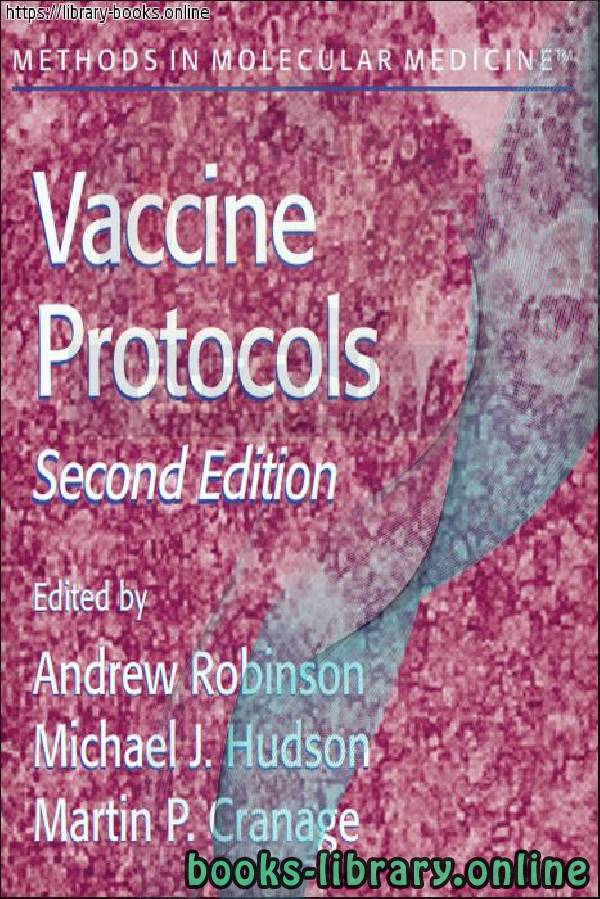📘 قراءة كتاب Vaccine Protocols أونلاين


Biologically
Biology is a natural science that is concerned with the study of life, its various forms and its function, how these organisms interact with each other and with the surrounding environment. The word biology in Greek is made up of two words: bio (βίος) meaning life. And loggia (-λογία) means science or study. Biology: the similarity of vegetation and animal cover on the edges of the African and American states, and the existence of the same fossil.
Branches of biology
Biology is an ancient science thousands of years old and modern biology began in the nineteenth century. This science has multiple branches. Among them are:
Anatomy
Botany
Biochemia
Biogeography
Biofisia
Cytology or cell science
Ecology or environmental science
نبذه عن الكتاب:
Overview of Vaccines
Gordon Ada
1. Patterns of Infectious Processes
Most vaccines are designed as a prophylactic measure to stimulate a lasting immune
response so that on subsequent exposure to the particular infectious agent, the extent
of infection is reduced to such an extent that disease does not occur (1). There is also
increasing interest in designing vaccines that may be effective as a therapeutic measure, immunotherapy.
There are two contrasting types of infectious processes.
1.1. Intracellular vs Extracellular Patterns
Some organisms, including all viruses and some bacteria, are obligate intracellular
infectious agents, as they only replicate inside a susceptible cell. Some parasites, such
as plasmodia, have intracellular phases as part of their life cycle. In contrast, many
bacteria and parasites replicate extracellularly. The immune responses required to control the different patterns of infections may therefore differ.
1.2. Acute vs Persistent Infections
In the case of an acute infection, exposure of a naive individual to a sublethal dose
of the infectious agent may cause disease, but the immune response generated will
clear the infection within a period of days or weeks. Death occurs if the infecting dose
is so high that the immune response is qualitatively or quantitatively insufficient to
prevent continuing replication of the agent so that the host is overwhelmed. In contrast, many infections persist for months or years if the process of infection by the
agent results in the evasion or subversion of what would normally be an effective
immune control reaction(s).
Most of the vaccines registered for use in developed countries, and discussed briefly
in the next section, are designed to prevent acute human infections.
Biology
Human biology
Who is the founder of biology?
The importance of biology
Areas of work in the field of biology
Theories of biology
Research on biology for the first grade of secondary school
Human biology
سنة النشر : 2003م / 1424هـ .
حجم الكتاب عند التحميل : 3.341 .
نوع الكتاب : pdf.
عداد القراءة:
اذا اعجبك الكتاب فضلاً اضغط على أعجبني و يمكنك تحميله من هنا:

شكرًا لمساهمتكم
شكراً لمساهمتكم معنا في الإرتقاء بمستوى المكتبة ، يمكنكم االتبليغ عن اخطاء او سوء اختيار للكتب وتصنيفها ومحتواها ، أو كتاب يُمنع نشره ، او محمي بحقوق طبع ونشر ، فضلاً قم بالتبليغ عن الكتاب المُخالف:
 قبل تحميل الكتاب ..
قبل تحميل الكتاب ..
يجب ان يتوفر لديكم برنامج تشغيل وقراءة ملفات pdf
يمكن تحميلة من هنا 'http://get.adobe.com/reader/'


 منصّة المكتبة
منصّة المكتبة 